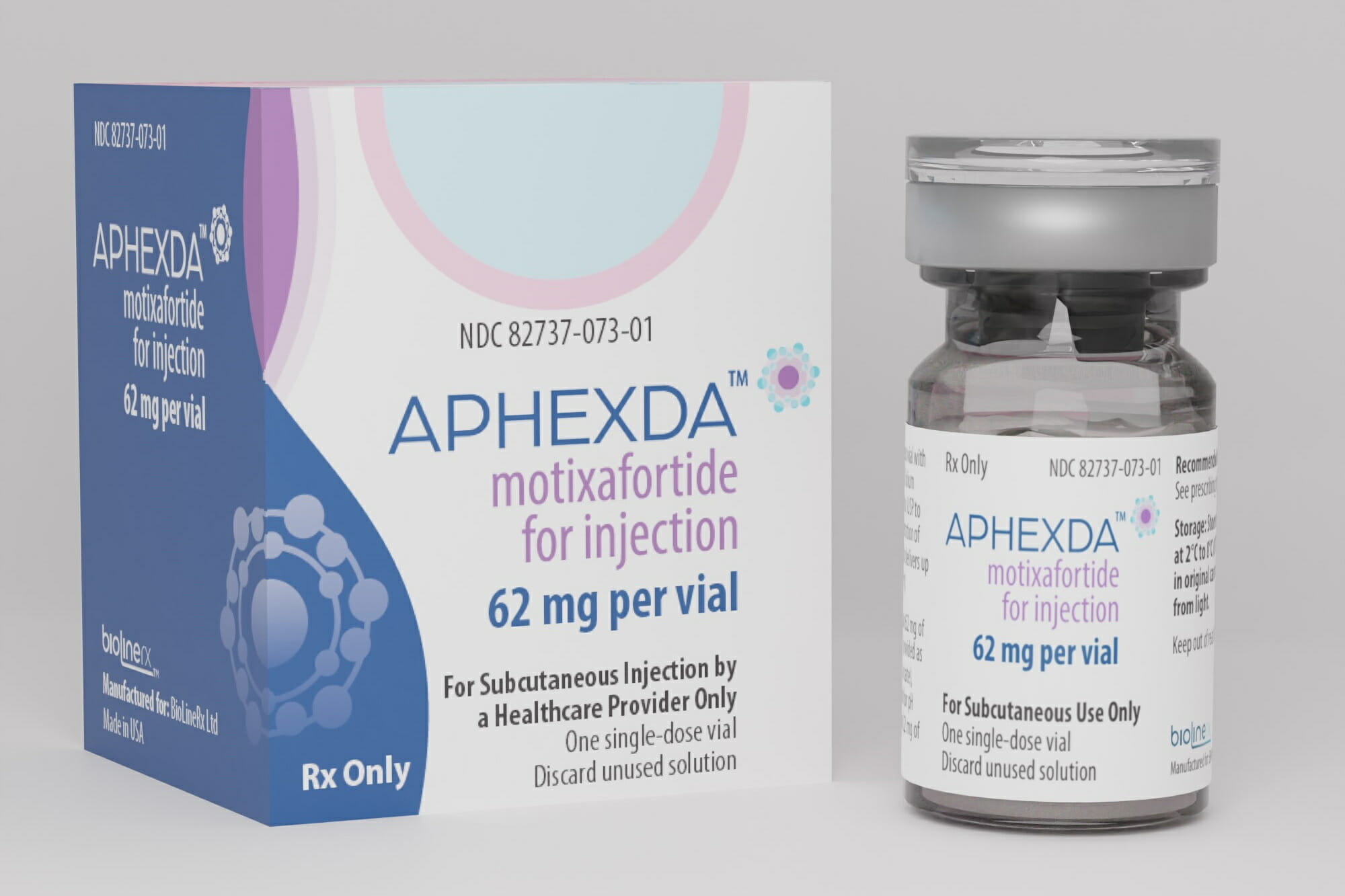The Food and Drug Administration (FDA) has approved Aphexda™ (motixafortide) in combination with filgrastim (granulocyte colony stimulating factor [G-CSF]) to mobilize hematopoietic stem cells to the peripheral blood for collection and subsequent autologous transplantation in patients with multiple myeloma.
Stromal-derived factor-1α (SDF-1α) and C-X-C motif chemokine receptor 4 (CXCR4) play a role in the trafficking and homing of human hematopoietic stem cells to the marrow compartment. As an inhibitor of CXCR4, motixafortide blocks the binding of its cognate ligand, SDF-1α/C-X-C motif chemokine ligand 12 (CXCL12). This results in leukocytosis and elevations in circulating hematopoietic stem and progenitor cells into the peripheral circulation.
The approval was based on data from the phase 3 GENESIS study (ClinicalTrials.gov Identifier: NCT03246529), which assessed the efficacy and safety of motixafortide plus G-CSF for the mobilization of hematopoietic stem cells in 122 adults with multiple myeloma. Study participants were randomly assigned 2:1 to receive either motixafortide 1.25mg/kg subcutaneously (n=80) or placebo plus G-CSF (n=42). Prior to treatment, patients received daily morning doses of filgrastim for 4 days.
Findings showed that 67.5% of patients in the motixafortide treatment arm met the primary endpoint achieving the cell collection goal of at least 6.0 x 106 CD34+ cells/kg in up to 2 apheresis sessions after a single administration vs 9.5% of those in the placebo arm (adjusted difference of 56.8%; P <.0001).
Additionally, a greater proportion of patients treated with motixafortide achieved a cell collection goal of at least 6.0 x 106 CD34+ cells/kg in 1 apheresis session (63.8% vs 2.4% for placebo; P <.0001) and a cell collection goal of at least 2.0 x 106 CD34+ cells/kg in 1 apheresis session (87.5% vs 38.1% for placebo; P <.0001). The time to neutrophil and platelet engraftment and graft durability after transplantation were similar across treatment arms.
The most common adverse reactions reported were injection site reactions, injection site pain, injection site erythema, injection site pruritus, pruritus, flushing, and back pain.
“Given the strong efficacy data shown in the GENESIS trial, which included patients who are representative of the current multiple myeloma patient population, we believe Aphexda will play a critical role in addressing unmet needs and introduce a new treatment paradigm for this challenging cancer,” said Philip Serlin, CEO of BioLineRx Ltd.
Aphexda is supplied in a single-dose vial containing 62mg of motixafortide as a lyophilized powder for subcutaneous injection after reconstitution. The product is expected to be available in September 2023.
This article originally appeared on MPR
References:
- BioLineRx announces FDA approval of Aphexda™ (motixafortide) in combination with filgrastim (G-CSF) to mobilize hematopoietic stem cells for collection and subsequent autologous transplantation in patients with multiple myeloma. News release. BioLineRx Ltd. September 11, 2023. https://www.multivu.com/players/English/9174951-biolinerx-fda-approval-aphexda/
- Aphexda™. Package insert. BioLineRx; 2023. Accessed September 11, 2023. https://www.aphexda.com/files/APHEXDA-Prescribing-Information.pdf.
